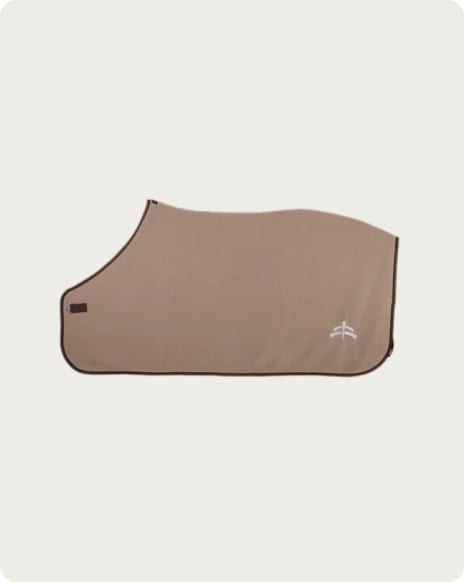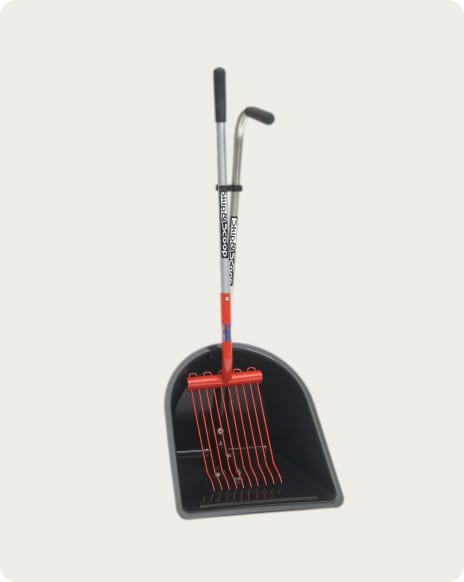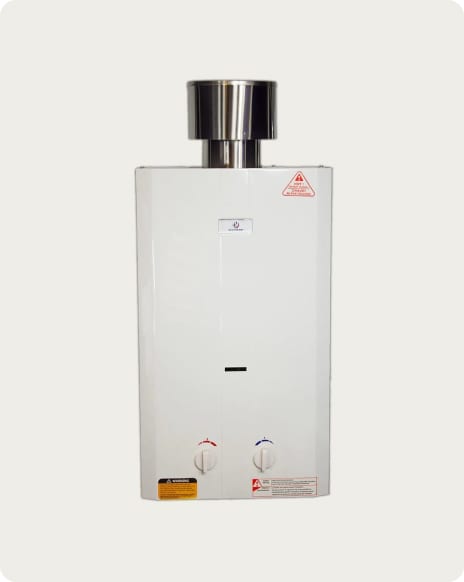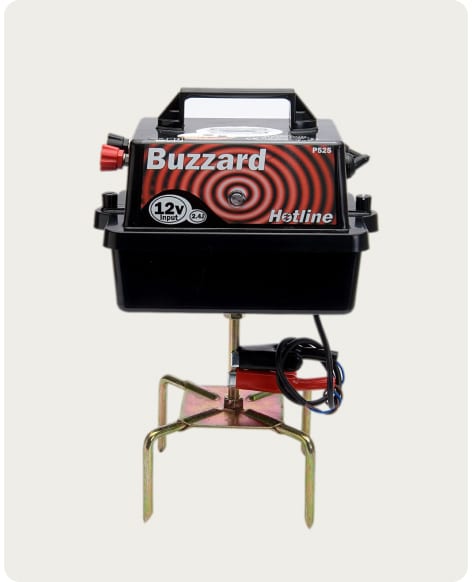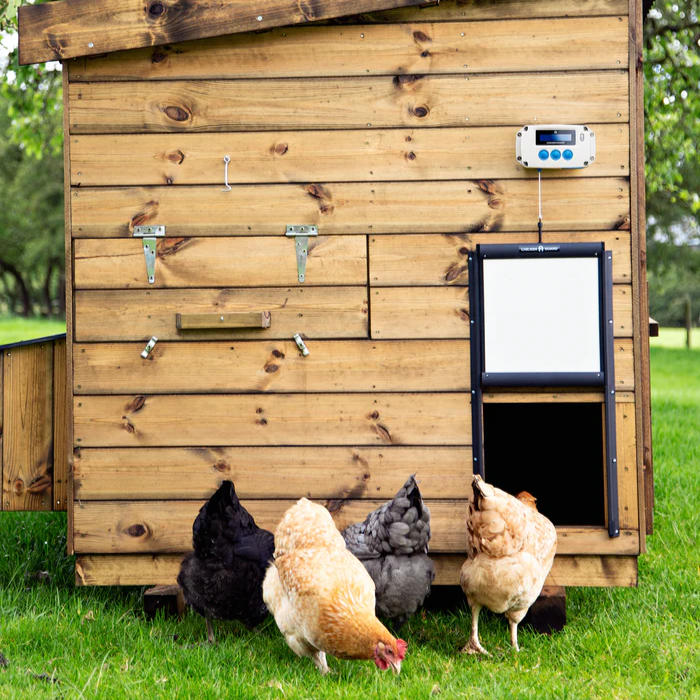When connecting two lengths of tape, cord or wire to extend the fence length, or to fix a breakage, use connectors, tensioners, and joiners with your chosen product.
Do not be tempted to just tie a knot, especially if you are using tape or rope as this will cause the breakdown of the filaments, and reduce conductivity. If your fence has two or more horizontal lines, use a line to line connector to create conductivity between the parallel lines.
The most important part of the setup for your electric fence is to make sure you connect the battery, energiser and earth rod(s) correctly. The grounding or earthing rod needs to be as far into the soil as it can go to give the best conductivity, and the energiser and battery connected up with the lead-out cable. To check your electric fence is working, use an electric fence tester regularly.
Hotline electric fencing supplies have a range of electric fencing kits for sale, which gives you all the basics for your fencing, whether you are planning to use a battery or solar power supply, or connect to your mains electricity.... The Hotline electric fencing supplies are all available to buy online with free delivery in the UK.<
Grounding - Most Overlooked Aspect of an Electric Fence
Electric fencing works in two ways, the physical barrier which is the fence itself, and the psychological barrier, the short, sharp shock the animals receives when it touches the fence, which is the most important element for the fence to work. So grounding your fence system effectively is necessary for your electric fence to work effectively.
So what is a ground system? The ground system consists of one or more ground rods, set in the ground which, when connected to the energiser, creates a complete circuit for the current from the energiser to be carried around your fencing, through the conductive filaments in the fence tape or wire, and returning to the energiser’s ground terminal.
How does grounding work? For an animal to receive that short, sharp sting when it touches an electric fence, the current from the energiser pulsing along your fence wire needs to complete a full circuit. When the animal touches the electric fence, the current completes the circuit from the fence, through the animal, and back through the soil to the energiser via the ground rod.
If the circuit isn’t completed, the fence will not produce a shock; for example, if a bird was to land on the electric fence, it will not get a shock, because it isn’t touching the ground, so isn’t completing the circuit.
When setting up a grounding system, it is important to take into account some environmental factors that can affect the efficiency of your system. You will need to drive your grounding rod(s) in as deep as possible, leaving just enough at the top to connect your energiser. Damp soil conducts far more efficiently than dry soil, so it is a good idea to water the area before driving your rod in, and, if possible, picking an area that stays damp.
If your land is liable to dry out, using more grounding rods, spaced about 10 feet apart, and connected with insulated wire will boost the conductivity. In an especially dry summer, watering the area you plan on erecting the system will help to maintain your grounding system’s efficiency.
Rocky or dry sandy ground can also affect the efficiency of your fencing system; if you have no alternative area to use, then you will need to increase the number of grounding rods you use to boost the conductivity.
Locating your rods near to buildings can also affect the system, especially if there are electric cables or water pipes as this will inhibit conductivity, it is recommended to stay at least 75 feet away from building structures and any known utility pipes or cables.
Common Electric Fence Earthing Problems
If you are having problems with your electric fence system, and the charge is either not working, or not spread evenly over the whole fence, probably the first thing to check is whether there are any external issues around the fence that can cause a break in your earthing system.
Walk around the perimeter to check if vegetation has grown too high under the fence, this would cause a break in the circuit, this is particularly common in spring and summer, and which will require either strimming the perimeter or weed killing.
Another cause could be the tape, rope or wire you use has broken or worn, if this is the case, use the proper connectors or joiners to mend it, don’t be tempted to tie a knot as this breaks down the conductive filaments, and weakens the conductivity of your fence.
If the weather has been very wet or windy, you may find the tension of your cable needs tightening, especially if your electric system is installed on an existing fence, if the line has become loose, it could be touching the metal stock fence, and causing weakening or breaking the circuit.
Having exhausted the obvious, the problem is probably something to do with your power output or grounding system.
If you use a battery powered system, the obvious first thought is to check the battery is working.
Make sure all wire connections are connected properly, and there is no corrosion, as this will inhibit the output.
Next thing to check is the energiser. Switch off and unplug the energiser from both the earth or ground wire and the fence. Turn the energiser back on and using a fence tester, insert the ground probe into the earth terminal of the energiser, and then the metal loop on the tester into the positive terminal. The reading you get on the tester will indicate whether your energiser is working, or if there is a problem.
If the energiser is working properly, and there are no other issues with your system, you probably need to improve the grounding set-up by adding a further grounding rod, 10 feet away from the existing ones, and connecting with insulated wire. To test if your grounding needs to be altered, turn the energiser off then place a metal bar so it is touching both the ground and your fence wire about 30 metres from the energiser. Switch the energiser back on and test the voltage between the ground and the earthing spike. If this is over 200 v, you need to install another grounding rod to boost conductivity.
It is not uncommon if you are fencing an area of dry, sandy or rocky ground, which is less conductive than damp soil, for the need to use multiple grounding rods to produce enough conductivity for an efficient electric fencing system. Also if you are fencing a large field area, you will need a series of grounding rods connected together to produce a strong enough circuit.





